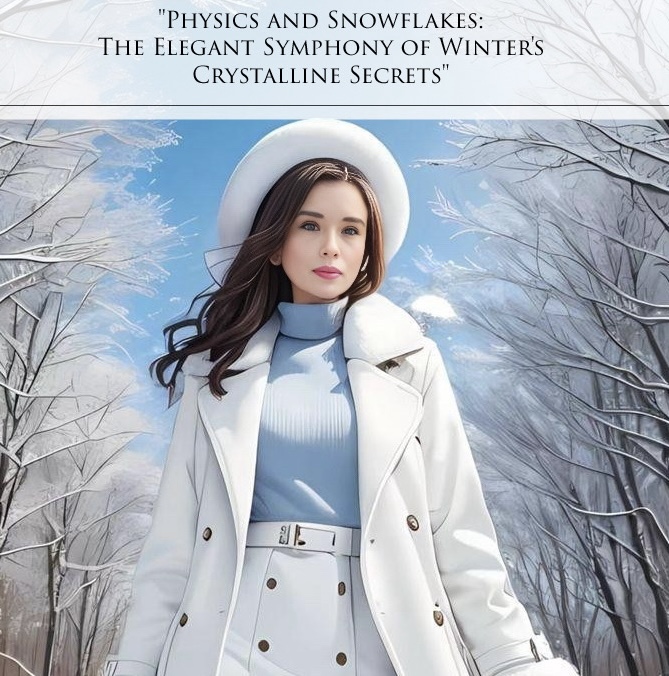
When we look at a snowy landscape, the seemingly uniform whiteness is not just a random occurrence but a fascinating interplay of physics, light scattering, and the intricate structure of snow crystals. Let’s embark on a journey to unravel the depth of this phenomenon with a more extensive exploration of the physics involved, complete with mathematical insights.
1. Multiple Scattering of Light:
As sunlight penetrates a snow crystal, it initiates a series of scattering events within the crystal lattice. The process of multiple scattering causes light to change direction several times before eventually leaving the crystal. The intensity of scattered light is governed by the angle of incidence and the properties of the scattering medium, which, in this case, is the intricate arrangement of ice crystals.
Mathematical Insight (Scattering Equation):
[ I(\theta) = I_0 \cos^2(\theta) ]
Here, (I(\theta)) represents the intensity of scattered light at an angle (\theta), and (I_0) is the incident light intensity. The cosine term captures the angular dependence of the scattering process.
2. Mie Scattering Theory:
To further understand the scattering behavior of light by snow crystals, Mie scattering theory becomes instrumental. This theory provides a mathematical framework for describing the scattering of light by spherical particles, a reasonable approximation for the shape of ice crystals. Mie theory takes into account the interference of scattered light waves, contributing to the complex scattering patterns observed in snow.
Mathematical Insight (Mie Scattering Intensity):
[ I(\theta) = I_0 \dfrac{\sin^2(\alpha)}{\alpha^2} ]
Here, (I(\theta)) denotes the scattered intensity, and (\alpha) is related to the size parameter of the particle and the wavelength of light.
3. Color Absorption:
A crucial aspect contributing to the whiteness of snow is the absence of color absorption by ice crystals. Unlike materials with pigments that selectively absorb certain colors, the absorption coefficient ((\alpha)) in ice is low, signifying that it does not favor any particular color. This characteristic is vital in maintaining the neutrality of snow’s color.
Mathematical Insight (Absorption Coefficient):
[ \alpha = \dfrac{1}{\text{Mean Free Path}} ]
Here, the mean free path quantifies how far a photon can travel in the material before being scattered.
4. White Light Perception:
The culmination of multiple scattering events, the principles outlined in Mie scattering theory, and the low absorption coefficient collectively result in the perception of snow as white. The scattered light preserves its full spectrum, and our eyes integrate these scattered colors, providing the sensation of whiteness.
In essence, the whiteness of snow is a deeply rooted interplay of light physics, crystal structure, and material properties. While the equations offered here offer a glimpse into the physics behind this natural phenomenon, a comprehensive understanding involves a more extensive exploration of light propagation, scattering theories, and the intricate details of ice crystal behavior. Thus, when we appreciate the pristine whiteness of snow, we are, in fact, witnessing a symphony orchestrated by the laws of physics on a frozen canvas.
